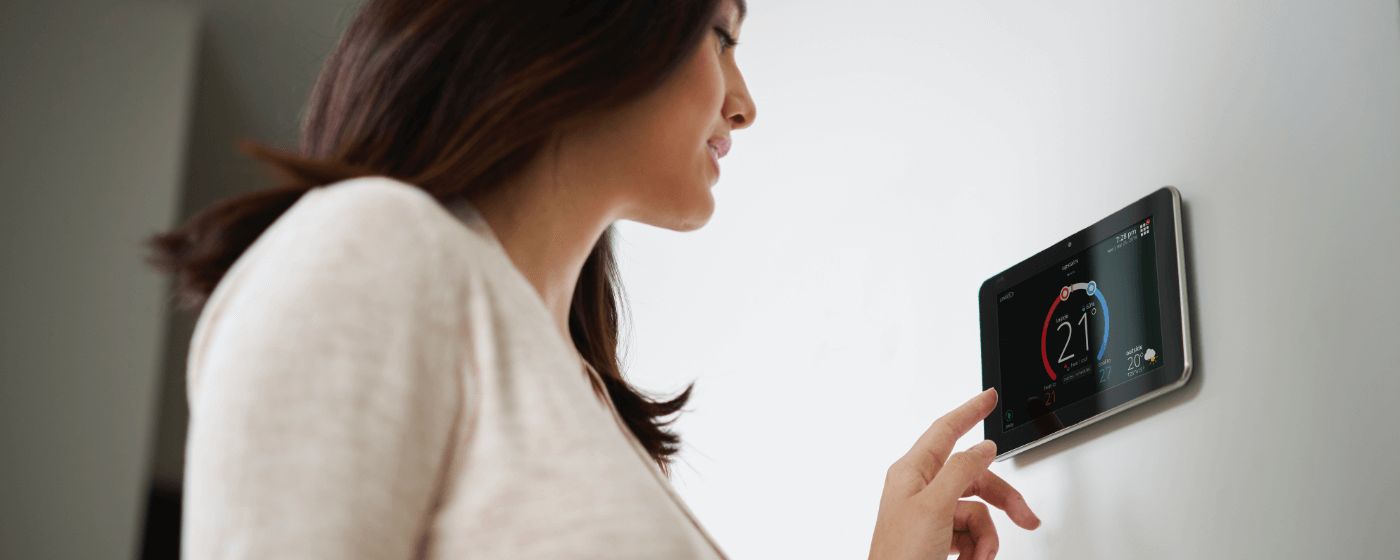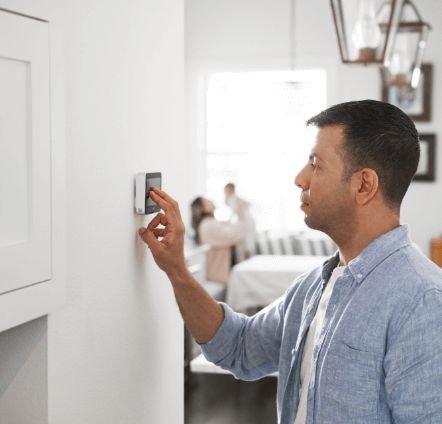
Thermostats-when to replace
and what to expect
August 2019 • 3 min read
Many problems attributed to a homeowner’s HVAC system can be directly linked to the thermostat. A homeowner’s thermostat is the one vital component of their temperature-controlled system, and as you can imagine, any problems dealing with the thermostat can cause a lot of discomforts.
When replacing a thermostat, you’ve got to be prepared to educate homeowners on what type of thermostat they might require, and discuss how much do they want to spend? Homeowners need to know there are three types of thermostats they can purchase:
Once you determine the type of thermostat the homeowner needs, you’ll want to help them choose a model that’s compatible with their HVAC system. All Lennox thermostats can be purchased at your nearest Lennox Stores or can be ordered online in the Parts & Supplies section of LennoxPros.com.
Three important considerations to keep in mind when helping homeowners choose compatible thermostats are:
- The system's specific voltage.
- The location on the wall.
- The number of heating/coolng stages their system has.
Lennox convenience, comfort, and energy-saving lines of thermostats
Lennox offers homeowners a wide-range of programmable, non-programmable, and smart programmable thermostats. Lennox iComfort smart thermostats feature a bold and bright color display face, which pairs up with any Google Assistant device.
Here are a few common problems homeowners face when replacing a thermostat
Some of the typical problem’s homeowners encounter when replacing thermostats range from the system not turning on, thermostat doesn’t respond to settings, to faulty wiring, dust and debris, and heat anticipator issues.
HVAC system won’t turn on
One of the most obvious signs a homeowner needs a thermostat replaced is the system won’t turn on or respond to the thermostat settings. Check the thermostat to see if it turns on the heating or cooling system from the thermostat. If there’s no response from the system, it could mean the thermostat needs replacing.
The thermostat doesn’t respond to changed settings
When the homeowner makes temperature settings at the thermostat, it should almost immediately respond to those changes. Most of the time, a thermostat produces a small clicking sound when changes are made, then the heating and cooling equipment starts. If there is no sound after the changes are made or the system doesn’t come on, the thermostat may need replacing.
Inaccurate temperature readings
Usually, the first sign of problems with a thermostat is fluctuation in performance of the temperature regulating system. Homeowners can likely feel too hot or cold, especially if the thermostat is in a bad location such as direct sunlight, near an air vent or near an appliance that gives off heat. When this happens the furnace or heat pump turns off prematurely. Another common location-related problem with thermostats is they’re not centrally located in the home. Installing the thermostat in the center of the home offers the most accurate reading of indoor temperatures and is usually away from hot or cold spots. Ideally, you want to make sure your homeowner’s thermostat is installed in a hallway.
Simple power problems
Old wiring, dust accumulation or extreme temperature changes can also cause malfunctions. When this occurs, the thermostat is unable to properly communicate with the homeowner’s heating equipment and regulate the temperature of their home.
Typically, thermostat issues can cause the furnace to stop producing heat or to circulate erratic amounts of air as well as cycle on and off more frequently than necessary.
Mismatched components
Ensuring proper operation of the homeowner’s furnace requires correctly matching their thermostat to their heating system. Low voltage thermostats are typically used in residential applications. A homeowner’s thermostat must be matched to their heating system based on the type, capability, and capacity of their furnace. Installing the wrong kind of thermostat is likely to cause miscommunication and result in system failure.
Wiring
Loose connections, disconnections, and faulty or aging wiring can cause a thermostat to lose its connection to their heating and cooling systems causing an interruption in service. If the furnace stops working properly, it’s a good idea to inspect the thermostat wiring. If you suspect faulty wiring, tighten and replace wires as necessary.
Dust and Debris
Dust and dirt are other culprits that can lead to inaccurate temperature readings and comfort problems in the home, especially if the dust builds up on the contacts inside the thermostat. This can be fixed by opening the cover of the thermostat and either dusting it off with a soft brush or using a can of compressed air.
Heat Anticipator Issues
Mounted in the center of most mechanical, non-digital thermostats is the thermostat heat anticipator. It tells the thermostat when to turn off the furnace burners. When it’s not functioning properly, it may cause the furnace to cycle on and off more frequently than necessary. If the heat anticipator is not set properly, it will require an adjustment.
Replace homeowner’s old thermostat with a Lennox
Thermostats are like any other electronic appliances in the home. They can break, malfunction or simply need to be upgraded. Most homeowners upgrade their thermostat when they want to save money on their electric bills or when the unit starts to break-down, which is easily noted by temperature swings in the home. Make sure you work with your homeowner to determine what’s best for their budget and level of comfort.
Helping you to increase your knowledge
Searching for more training and information on Lennox thermostats? Lennox Learning Solutions can help you expand your iComfort thermostat knowledge and proficiency. Here are three of the available iComfort Courses:



